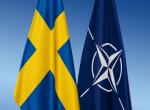“Only the terrorist and the Taliban forbid education to the women. Only the terrorist and the Taliban threaten to pull out women’s fingernails for wearing nail polish….the fight against terrorism is also a fight for the rights and dignity of women.”1 -Laura Bush, Radio Address, 2001)
The decision of President Trump to withdraw US security forces from Afghanistan has made the situation for women in the country more precarious. The ongoing negotiations with the Taliban and the complete absence of women representatives from the negotiating table have raised fear about the possibility of reversal of the fragile gains made by women in Afghanistan since 2001. The absence of women representatives from the peace negotiations also raises serious questions about the commitment which the US made towards empowering Afghan women in 2001. The issue of women rights became a major rallying point for the US government to garner support for military intervention in the country in the aftermath of the September 11 attacks. Since 2001, the US and the international donor community have pegged the issue of women’s rights and gender equality in Afghanistan as its topmost priority. Since then the United States alone has invested over 2 billion USD for the improvement of women’s rights in the country. 2
However, today, the foremost concern for the women in Afghanistan is whether the peace deal which integrates the Taliban in the government will compromise their rights and the gains they have made in the past 18 years. These fears are further compounded by the recent statements of the Taliban leaders. In the Moscow Talks which concluded in February 2019, the Taliban delegation emphasized that they support women rights based on Islam. 3 However, in the same statement, the Taliban contradicted and declared that “under the name of women’s rights there has been work for immorality, indecency, and promotion of non-Islamic cultures and we are committed to eliminating all those evil customs and traditions that violate women’s rights and do not comply with Islamic principles.”4 Moreover, their emphasis on Islam can also be open to varied and wide interpretations. The Taliban is infamous for following the most extreme version of Islam based on Salafism and Pashtunwali. The Human Rights Watch reported in 2010, “in areas they control or influence, the Taliban have threatened and attacked women in public life and ordinary women who work outside home. 5
It is important to recall that the Taliban regime (1996-2001) was infamous for its barbaric treatment of women. The ultra-radical group had put a complete ban on female education, forbade them from working outside the home, and prohibited their mobility without the company of close male relatives. The Taliban even insisted that people should blacken the window of their houses so that women are not visible from outside. The enforcement of these edicts was looked after by the Ministry for the Promotion of Virtue and Prevention of Vice. Under the gender apartheid imposed by the Taliban regime, the public amputations of limbs, lashings, stoning of women and executions became weekly events in Kabul and Kandahar.6
In order to gain international legitimacy, the Taliban leaders are continuously presenting a moderate narrative on human rights including women rights to the western leaders, masses, and media. However, there is no possible means of establishing the sincerity of their narrative on these issues. Afghan Women Network (AWN), a leading NGO working for gender equality in Afghanistan, also observed that “the Taliban have time and again said that they have changed, however, women’s experiences from the provinces and communities where insurgencies continue contradict such claims to these changes.” 7 The Taliban still derives its legitimacy from being the true upholder of Islam and Islamic values. Therefore, the dilemma for the Taliban is how much it can moderate itself without losing its credentials as a puritanical Islamic movement.
This is precisely the reason why the women in Afghanistan are raising strong voices against the possibility of any hasty peace deal with the Taliban which might compromise the rights and the gains they have made since 2001. Most of them do not reject the peace process, however, they strongly emphasize the need to include women at all levels of negotiations with the Taliban. In February 2019, over 2000 women gathered in Kabul from all over the country at the ‘Conference on Afghan Women National Consensus on Peace’ convened by the Office of First Lady Rula Ghani, Ministry of Women’s Affairs, the Afghan Women Network, and Afghan Civil Society. During the conference, the women participants clearly stressed their desire for peace, however, not at the cost of their rights. They also emphasized the need for “ironclad guarantees” to ensure that women’s rights would be protected as part of any peace agreement with the Taliban.8
The women have launched vigorous social media campaigns in recent times to convey their aspirations and fears in the background of ongoing peace talks. In this regard, Twitter hashtags such as #AfghanWomenWillNotGoBack9 and #MyRedLine10 have become increasingly famous. In fact, after the Doha peace talks in March 2019, Afghan Women’s Network, specifically demanded that any reconciliation process with the Taliban must preserve the constitution of Afghanistan since it has, “provided employment to women, educated them, given them skills, lowered their mortality rates and have provided them with relative security….peace negotiated at the cost of the democratic system, or divisions of state institutions such as ministries between different factions will not be acceptable by the women of Afghanistan. Democracy must not be up for negotiation! This demand includes an absolute rejection of any suspension of the Afghan constitution.”11
It is important to recall that the Taliban has rejected the Afghan constitution during the Moscow Talks. The ultra-radical group stated that “the Kabul Government Constitution is invalid. It has been imported from the West and is an obstacle to peace”12. As the largest democracy in the world, India should give its voice to the women and people of Afghanistan in their struggle for protecting their constitution. Any amendment to the Constitution should be strictly based on the mechanism already laid down in the Constitution itself.
Today, the women in Afghanistan are vigorously taking part in the social, economic and political development of the country. They have made modest but substantial gains in terms of equality of status, education, healthcare, political participation, and economic empowerment. They are coming out in increasing number to vote, contest in elections, enroll in security forces, and contribute in the field of media, and arts including as female street artists, painters, photographers, and musicians. The women representation in national assembly is 27 percent, in provincial councils 20.9 percent, in the cabinet 15 percent, in decision-making levels of government 10 percent, and in judiciary 12 percent.13 Despite these modest gains, there is no denying the fact that Afghanistan still remains the most challenging place to be a woman and the quest for gender equality in the country is far from over. However, it is utmost essential that the fragile gains which the women in Afghanistan have made are protected and secured.
The best safeguard against the deterioration of women rights is the inclusion of women at all levels of negotiation and reconciliation process. In this background, the recently released list for negotiating council and Reconciliation council fails to give honorable representation to the women of the country. The lists include only two women out of 22 individuals for the negotiating council and five women out of a list of 37 individuals for the reconciliation council.14 The women of Afghanistan have suffered the most under the Taliban regime. A peace deal which doesn’t take into consideration half of the population of Afghanistan is neither desirable nor sustainable. To avoid a scenario where a peace deal is imposed upon the women of the country, it is important that women are given 40-50 percent representation in the negotiating team.
Protecting and safeguarding gender equality and women rights is not only a matter of principle for the US and the international community, including India, it is also a strategic necessity. Various studies have proven that gender equality and inclusion of women in the peacebuilding efforts bring more stability, security, and development for the entire communities. As a strategic partner with over 3 billion USD investment in Afghanistan, India has strong stakes in the stability and development of the country. Therefore, it is imperative for a rising power like India to use its international standing and raise its voice to give unconditional support to the Afghan women in their quest for equality and dignity. The peace and stability in Afghanistan will not be sustainable if the hopes and aspirations of half of the population remain neglected and unheard.
Endnotes
- Susan Chira, “Women here are very very worried”, 22 March 2019, The New York Times, URL: https://www.nytimes.com/2019/03/22/sunday-review/women-afghanistan-taliban.html , Also see, Report on the Taliban’s War against Women, Bureau of Democracy, Human Rights and Labour, U.S. Department of State, 17 November 2001, URL: https://2001-2009.state.gov/g/drl/rls/c4804.htm
- 2019 High Risk List, SIGAR, URL: https://www.sigar.mil/pdf/spotlight/2019_High-Risk_List.pdf
- Frud Bezhan, “Afghan Taliban Open To Women's Rights -- But Only On Its Terms”, Radio Free Europe/Radio Liberty, 6 February 2019, URL: https://www.rferl.org/a/taliban-afghanistan-open-women-s-rights-only-terms/29755102.html
- Taliban say women's rights to be protected under Islam, but must not threaten Afghan values, The Telegraph, 5 February 2019, URL: https://www.telegraph.co.uk/news/2019/02/05/taliban-say-womens-rights-protected-islam-must-not-threaten/
- “The Taliban War on Women Continues”, Human Rights Watch, 14 July 2010, URL: https://www.hrw.org/news/2010/07/14/taliban-war-women-continues
- Ahmed Rashid (2001), Taliban: The story of the Afghan Warlords, Pan Books: London, pp:70-71
- Afghan Women’s Public Statement on Doha Peace Talks, Serial No. 78, Afghan Women’s Network, URL: http://awn-af.net/index.php/cms/press_detail/1506/12
- Fatima Faizi and David Zucchino, “700 Afghan Women Have a Message: Don’t Sell Us Out to the Taliban”, The New York Times, 28 February 2019, URL: https://www.nytimes.com/2019/02/28/world/asia/afghanistan-women-taliban.html, Also see, Anisa Shaheed, “Ghani Stresses Preserving Women’s Rights In Peace Process”, TOLO News, 28 February 2019, URL: https://www.tolonews.com/afghanistan/ghani-stresses-preserving-women%E2%80%99s-rights-peace-process
- https://twitter.com/hashtag/AfghanWomenWillNotGoBack?src=hash
- https://twitter.com/hashtag/MyRedLine?src=hash Also see, My Red line, UN Women, URL: http://asiapacific.unwomen.org/en/news-and-events/stories/2019/03/myredline
- Afghan Women’s Public Statement on Doha Peace Talks, Serial No. 78, Afghan Women’s Network, URL: http://awn-af.net/index.php/cms/press_detail/1506/12
- “Taliban demands new Afghan Constitution”, 5 February 2019, The Hindu, URL: https://www.thehindu.com/news/international/taliban-demands-new-afghan-constitution/article26187241.ece
- UN Human Rights Council, “National Report on Afghanistan”, URL: https://documents-dds-ny.un.org/doc/UNDOC/GEN/G18/339/51/PDF/G1833951.pdf?OpenElement
- Govt Proposes Lists For Negotiating Team, Reconciliation Council, TOLO News, 7 April 2019, URL: https://www.tolonews.com/afghanistan/govt-proposes-lists-negotiating-team-reconciliation-council
Image Source: https://newscentral24x7.com/wp-content/uploads/2019/03/D1FPHgwX4AM9_6d-800x533.jpg











Post new comment